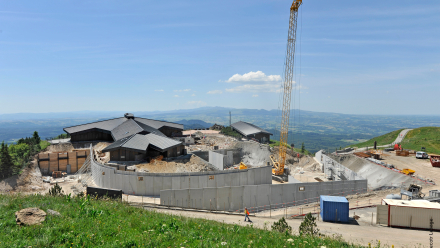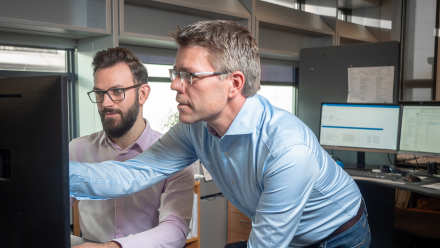Facts
Location
Port of Lake Erie, OH
Nemetschek Group Brands
RISA
Scope
Steel Framing, Steel Plates, Steel Connections
Client
Richmond Engineering Works
Owner
Confidential
Technology used
RISA-3D
Project Background
Large equipment such as a mobile stacker reclaimer are crucial to the process of handling and moving large amounts of bulk material in and around ports, power plants and stockyards. Richmond Engineering Works designed, fabricated and assembled one such piece of equipment to be used at an export facility on Lake Erie, Ohio. The machine (generally controlled from an operator's cab) utilizes a bucket wheel to remove material from a pile, place it onto a series of conveyor belts and then deposit the material in another location (stacking) for further processing or removal. In general, these large machines are the workhorses of the stockyard or port, enabling an operation to increase productivity.
About the Structure
For the design of the mobile stacker reclaimer, Richmond Engineering Works offered a turn-key approach based on the specifications provided by the customer. The equipment was designed to replace existing machinery and included specific requirements for digging capacity, traveling speed, amount of material handled (tons per hour) and boom reach. Due to the amount of equipment and unique geometry of the stacker reclaimer, structural steel was used to both support the loading conditions as well as the typical operating requirements. At the “front” of the system, the bucket wheel induces large torsional moments into the boom requiring additional steel plate reinforcements. Additionally, the discharge conveyor at the rear of the machine cantilevers out 50ft and is supported by a series of 40” deep tapered steel girders. Finally, because of the structure's imbalance, a 25,000 lb concrete counterweight was added to the rear of the machine in order to keep it stable.
"RISA-3D allowed our engineering team to easily model the complex structure as separate pieces and then append the models into one for full analysis and design, saving time and ensuring all loading conditions were accounted for." - Joe Dowiak
How Were RISA Products Utilized?
To design this real-life “Transformer”, structural engineers at Richmond Engineering Works utilized RISA-3D’s advanced graphical capabilities paired with input data tables allowing for the creation of four separate models that were then appended into a single, comprehensive file. This allowed the engineers to work simultaneously to achieve the project design schedule. Additionally, a box section that formed the boom was analyzed as plates in order to fully grasp the stresses that were introduced into the structure by the bucket wheel. Finally, the flexibility in modeling, applying boundary conditions and tension only members, allowed for the structure (where the booms sections are effectively “hung” causing the model to be unstable) to be analyzed and designed properly.




